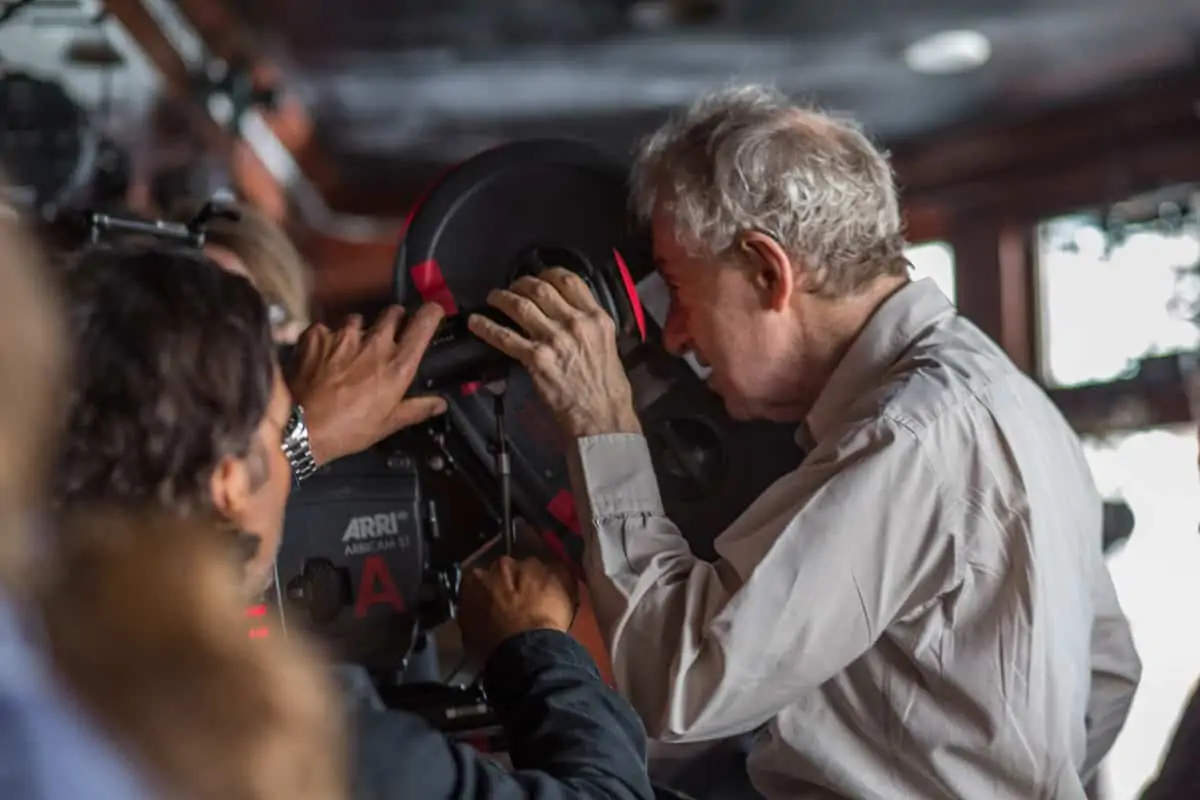Walkie Talkie
Darius Khondji AFS ASC / Irrational Man

Walkie Talkie
Darius Khondji AFS ASC / Irrational Man
Woody Allen is among the most prolific of big name directors working in cinema today. Since starting in the late 1960s he has produced a film a year for most of his filmmaking career.
During that time he has worked with some of the leading cinematographers of their generation, including Gordon Willis ASC and Carlo Di Palma. More recently Darius Khondji has become a regular visual collaborator during the director's 'European period'.
Despite Allen's deliberate move away from his established New York milieu – shooting in London, Italy and France over the last ten years – there have been returns to his homeland. Khondji's latest film for Allen, Irrational Man, marks another revisiting of the US. Set in Rhode Island the film follows the increasingly complicated life of a philosophy professor, played by Joaquin Phoenix, who breaks out of slump by challenging fate and his own mortality.
This is Khondji's fifth Woody Allen film and continues the tradition of shooting on film – using Kodak stock – with Panavision lenses. "Sometimes I shoot on Cooke lenses for Woody," Khondji says. "He likes a nice, softer image, not anything that is very sharp or with high contrast. I was using Panavision C-series lenses on an Arriflex to Panavise it. I'm very familiar with ARRI cameras and find them lighter and easier to work with than the larger Panavision models."

A trickier decision to make was what ratio to shoot in. Khondji says he loves Anamorphic but initially thought that it didn't fit the story and tone of Irrational Man.
"It's not an epic film, but we have used Anamorphic on some of Woody's other films, including Magic In The Moonlight, and he loves the scope approach. It can be used for more intimate shots, where there are only one or two characters. But generally we wanted to keep this very simple, with minimal gear."
This last aim extended to using natural light for the majority of set-ups. While this meant working with the beautiful but changeable weather that comes into the US eastern seaboard, Khondji enjoyed the process. "I love using negative film and overcast weather," he explains. "There were places in Newport where we had to shoot as much as possible between dull patches or use backlighting and bounce fills. Woody likes natural light using fills fitted with unbleached muslin."
Khondji says he had used bounce light in the past but moved away from it recently in favour of diffusers. It was while working on Irrational Man with gaffer Frans Wetterings III that he rediscovered the benefits of bounced lighting: "When you work with a new gaffer they bring something to the production. Some gaffers make it very easy and quick and bounce light is very beautiful, so Frans made me use it again."

Bounce light was used for daylight and also in the apartment of Joaquin Phoenix's character. In this instance HMIs were shone through the windows and bounced into the room. Khondji says this way of lighting helped make set-ups quick and simple, always a benefit on an Allen film: "With Woody you have to work very fast, usually in 26 to 28 days, which means you can't make anything complicated."
Despite what might sound like a tough schedule that doesn't give much scope for lighting and camera work, Khondji describes Allen as a cinematographer's director. "It might not appear so but he is," he comments. "He's very helpful to the camera department within the budget and gives you everything - and a bit more if you need it. I find him a very visual director, even though he doesn't work with storyboards like others. He also works closely with music - he's a musician as well as a filmmaker - and feels the light and the camera moves in the same way as musical rhythm."

"I love using negative film and overcast weather"
- Darius Khondji AFS ASC
Something of a signature camera move in Allen's films is where the shot picks up two characters in the distance, who then walk and talk towards the camera. When they get fully into the frame the camera moves with them for the rest of the sequence. A classic example of this is in Annie Hall (1976), photographed by Gordon Willis ASC, with Allen and then regular sidekick Tony Roberts having an apparently inconsequential conversation as they walk down a street. Similar techniques were used in Irrational Man, including wide shots with actors walking and talking.
"Woody loves camera moves but doesn't like them to look gratuitous," Khondji says. "They need to go with the scene and he always goes through the cinematographer. In a way he pushes you to fail, to do something this way or that. He's very articulate about what he wants, whether it's a close-up, a medium or a track shot. Now I've done a few movies with him it's easier to decode what he's saying."

Another necessary factor in arranging camera moves and set-ups, Khondji says, is the input of the production designer, in this case another Allen regular, Santo Loquasto. "We worked together and talked about the scenes," he comments. "Collaboration is very important and you also need to be able to delegate, which Woody does with the cinematographer and production designer."
Allen's next project has already been announced, with Vittorio Storaro AIC ASC slated to shoot the director's first digital film – Khondji was committed to James Gray's upcoming version of The Lost City Of Z. But, with Woody Allen still churning out films annually at the age of 80, there's no reason to suppose the cinematographer and director won't resume their collaborative working relationship sometime soon.










